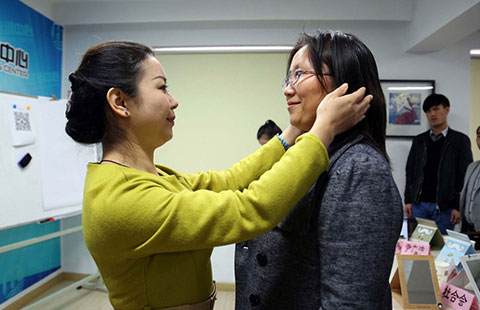Oman wants to be China's key partner in Belt and Road Initiative
(Xinhua) Updated: 2015-07-02 10:29MUSCAT - Ever since China first proposed the Belt and Road Initiative, Oman has been very active in trying to participate in the proposal, and wanted to be Beijing's key partner, said Chinese envoy to the country.
Yu Fulong, Chinese ambassador to Oman, told Xinhua in a recent interview that the Middle East country sits on a key spot along the Silk Road, and has had a long-term friendship with China.
Albeit that the two countries are different in political and social systems, they have a high level of economic complementarity, while their respective development strategy fits into that of the other, he noted.
The ambassador also said that the Belt and Road Initiative has not only built a new platform for both sides to coordinate their policies, promote connectivity and trade, and facilitate financial transactions, but also a new "bridge" for the two peoples to boost their mutual understandings and friendly exchanges.
The Belt and Road Initiative was first proposed by Chinese President Xi Jinping. It is aimed at reviving the ancient trade routes that span Asia, Africa and Europe.
The Chinese leader first floated the idea of an economic corridor during a visit to Kazakhstan in September 2013.
He then proposed an economic belt of improved infrastructure along the main strands of what, centuries ago, was the network of land routes used by silk traders and others to carry merchandise to and from China through Central Asia and Russia to northern Europe.
A month later, in Indonesia, he also put forward a maritime route that would stretch from south China to Southeast Asia, and even to Africa.
Over the past few months, the initiative has been given a real push. China has earmarked $40 billion for a Silk Road Fund to support infrastructure projects along both routes.
Oman has occupied a unique place along the maritime Silk Road, and brought together merchants from east and west for many centuries.
The country also has a long history of maritime trade connections that could date back to the 1st century AD. In these days, Chinese business people brought to Oman its silk and porcelain, while took back flax, cotton and frankincense.
Nowadays, the two nations have already enjoyed a strong modern day trade relationship. In 2014, total trade volume reached $25.86 billion, a 12,7 percent year-on-year rise.
"Because of these histories, the Omanis are very friendly with the Chinese, and the two peoples will further their trust and understanding as the two sides push forward the Belt and Road Initiative initiative," said Yu.
According to his introduction, Oman has been working hard in infrastructure, logistics, tourism and fishery, all of which are in line with Chinese advantages.
Over the past 30-plus years, China has developed a host of competitive industries and with the help of the Belt and Road Initiative, Oman can harness these strengths so as to promote a diversified economic development, he said.
Speaking of the recent notion of community of common destiny, which is also proposed by Chinese President Xi Jinping, the ambassador said the concept highlights trust, tolerance and inclusiveness in international relations, and is what Beijing wants to advocate as solutions to crises and conflicts worldwide.
He believed that the notion will help promote political mutual trust between China and Oman, spur their mutually beneficial cooperation, and step up bilateral cultural and people-to-people exchanges.
- 2015 China International Fair for Investment and Trade kicks off in Xiamen
- China's commodity imports robust in Jan-Aug period
- China stocks rebound 2.92%
- 2015 China box office already past 2014 total
- China foreign trade decline widens in August
- Interview: JP Morgan's senior executive bullish on China
- Innovation, development the focus for NZ mayors
- Lives of freelancers

















